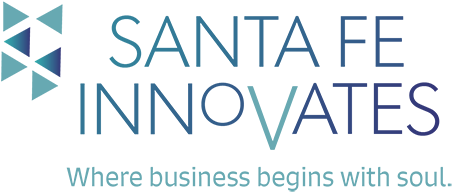"Ideas are easy. Implementation is hard."
~ Guy Kawasaki


Key facets of the ideation stage are:

1. Desirability
Is the solution you are looking to build something that customers want? Learn how to communicate your idea so that others can understand it.

2. Viability
Is your solution worth pursuing, in terms of market, cost to build, etc.? Determine if your idea is worth pursuing before you invest months or years of effort.

3. Feasibility
What would your solution build require, and is it possible? Learn how to pitch your idea to others so they buy-in and support you. You will hone your skills at communicating your validation plan for launching and scaling your idea.
The 3 outputs of this module are:

1. Lean Canvas
Entrepreneurs will use Lean Canvas, a 1-page, business plan template that helps deconstruct ideas into their critical assumptions and risks. It replaces elaborate business plans with a single page business model.

2. Traction Module
Are you solving a problem that is worth solving? Find out by using the traction model.

3. Pitch
Learn how to pitch your business and put your pitch into practice.
First Milestone
For the first milestone, those moving to the next stage deliver pitches that bring an idea to life with a realistic Ideation potential business model, social impact direction, and validation plan. Cohort members have completed the work and are open to suggestions.
If participants have not yet achieved these milestones, they will need to iterate more in the previous phases and/or pivot to a different idea or area of social impact.
Developing a minimum viable product
Once the MVP model is established, a startup can work on refining the offering. This will involve measurement and learning and must include actionable metrics that can demonstrate cause and effect questions.
An impact model for startups focuses on developing, funding, and implementing solutions to social, cultural, or environmental issues. Social entrepreneurs should be able to describe their theory of change and work towards creating a social impact plan in parallel with their business plan.
Using that approach, social entrepreneurs can start to recognize assumptions in the theory and track measures that help test how well things are progressing.
Second Milestone
For the second milestone, those moving to the next stage have successfully created MVPs of products and gained traction with customers. In addition, they have defined a plan for measuring progress in their targeted areas of social impact.
If they have not achieved these milestones, they will need to iterate more in the previous phases and/or or pivot to a different idea or area of social impact.
This stage will culminate with a go/no-go decision on whether advancement to Stage 3 is recommended.
Stage 3 is designed to help you build your company, attract investors, and plan for launch. These stages also focus on leadership and organizational culture development, along with refining your social impact model.
A business and impact plan to raise money should include:
An Executive
Summary
Overview of your business, social impact, and milestones.
Opportunity
What are you selling, and how are you solving a problem for your market? Who is your target market and competition?
How
Are you solving/ impacting social, cultural, or environmental issues?
Why
Are your metrics supporting your impact performance?
Execution
Your marketing and sales plan, operations, and your milestones and metrics for success.
Company &
Management
Summary
A financial forecast. Including a sales forecast, cash flow statement, income statement (also called profit and loss), and your balance sheet.
Business &
Impact Model
Defining the mix of profit and purpose. environmental issues?
Working with Us
Additional guidance as it relates to launching social enterprises.
Working with our accelerator program will also include applying models of social entrepreneurship, creating conscious, ethical, and practical leadership skills, and building scalable, respectful, and engaged organizational cultures. Options such as incorporating as a Benefit Corporation and/or gaining B Corp certification will be discussed.
Included in Stage 3 will be guest discussions from professors at the University of New Mexico Anderson School of Management. Topics will include leadership, organizational culture, strategy, and business planning.
"For us, it's about putting the principles of fairness and decency before profits."
~ Jen Woodgate, Cuddle + kind


Building your company + impact
When a business satisfies a social or environmental need, options for funding can be even more challenging. In Stage 3, we will help you understand some of the issues confronting social entrepreneurs that will likely be the concern of potential investors. This is a misperception, but traditional investors often see the social component of their business as a discount on return on investment.
We will help you identify specific, achievable, impact goals, and the necessary steps to get there. Balancing revenue growth and social mission is another challenge faced by social entrepreneurs. All businesses survive and thrive from sustainable, profitable growth. Social enterprises have a meaningful impact only when founders can sustain the business, create profit, and grow.
The accelerator program will help entrepreneurs create reliable, thorough, and engaging investor pitch decks, along with guidance on presenting to angel and venture capital investors. The pitch deck typically consists of 15-20 slides in a PowerPoint presentation and is intended to showcase the company's products, technology, and team to the investors. In addition to a pitch deck, whiteboard pitch skills also will be developed. There will be a Demo Day at the end of the program.
Launching a product and a startup in the marketplace requires exceptional preparation. Entrepreneurs have only one chance to launch. The impression the launch creates can significantly impact your business.
You should start creating your launch plan as soon as your business plan is developed and validated. The accelerator program will address the critical elements required for a successful product launch in the program.


